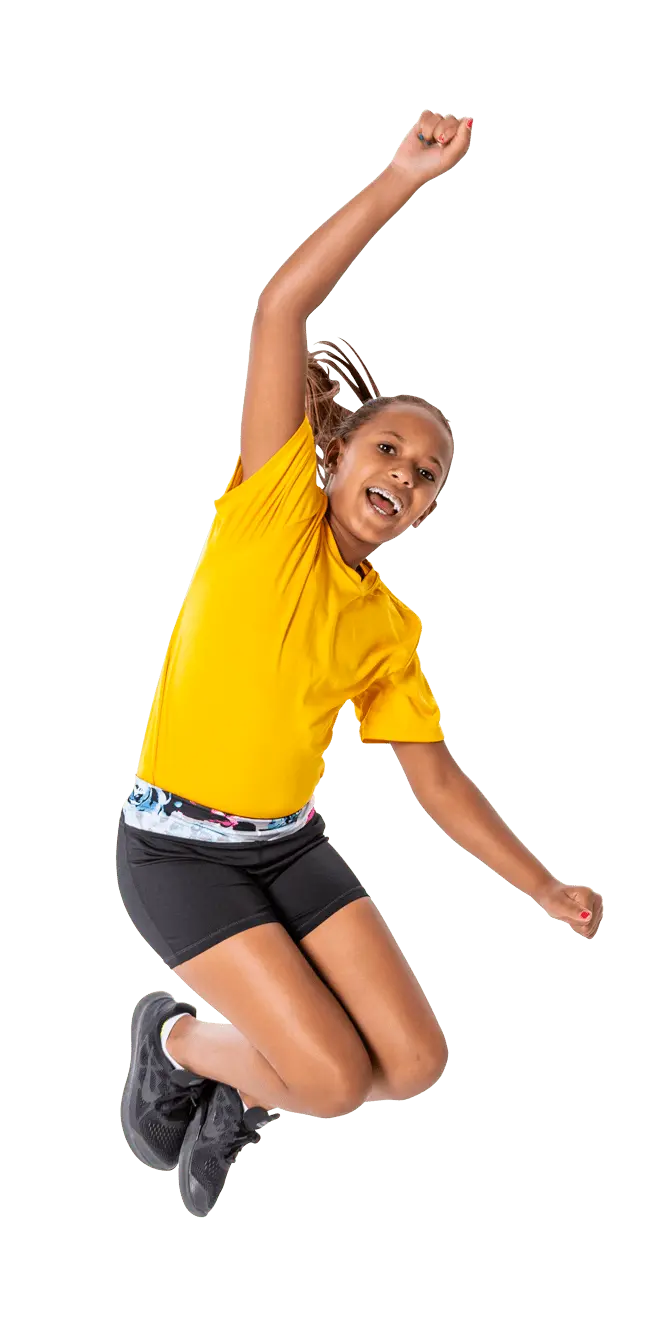
Fortunately, the new physical education does not subscribe to the elimination happy, exclusionary, winners vs. losers mentality. Success-driven physical education is all about designing and implementing a student-centered program where ALL students have a chance to develop skills and concepts that will help them be lifelong movers who make healthy choices. The nice thing is that we now realize that physical development is just like academic development (students learn in different ways and at different paces) and teachers are designing lessons that encourage participation by providing successful outcomes and proving appropriate challenges for everyone. In the education world, we call this “differentiation”. Quality health and physical educators have been differentiating lessons for years, but we seldom talk about the many ways we perform the task and hardly ever say the actual word “differentiation”.
Let’s take some practical examples and see how quality HPE teachers can promote a success driven physical education model. My favorite topic during staff development presentations is push-ups. Why do we have all of our students do an activity that many cannot complete correctly? Sure, there are a portion of students who can do great push-ups, the athletes, but can everyone? The students who cannot do a correct push-up are cheating in any way possible to complete the task without being ostracized by their peers. What about a more developmental approach that focuses on building the strength and the skill needed to complete a proper push-up. Kevin Neeld states that the three most notable limitations that he sees on a regular basis are; 1) lack of anti-extension core strength, 2) lack of scapulothoracic control, and/or 3) lack of pressing strength. I find that information to be particularly interesting.
Let’s put this into different terms…would a teacher have every student bench press 100 pounds? The answer is an easy no, right? Then why do we torture students with this technical strength movement without building the strength and skill to complete it correctly? The purpose of the push-up is to build upper body strength (and core strength too) or demonstrate it. Could we do other exercises that all students can complete that still fulfill the same objective, like; planking exercises that focus on form, a plank shoulder tap that develops muscle stabilization, core strength, and balance, a crab kick (alternating leg kicks that go above waist level), or a negative push-up that focuses on good form? What if you gave the students a choice, plank shoulder taps or quality push-ups? The athletes might like the challenge (can everybody say “differentiation”). What about just getting the students down on their hands and feet and walk around like a bear for 30-seconds? There are lots of options that will accomplish the same goal as a push-up and provide students a chance to be successful. Now, I do realize that some teachers may be required to use a 90-degree push-up as a fitness assessment. I am not saying that we should shy away from push-ups all the time. My point is there are other more student-centered options to build upper body strength than the traditional push-up.
To keep the momentum going, let’s talk about sport skills. As a physical education teacher, the goal is to teach students the skills and concepts that they need to be lifelong movers. I want children to love to move and sweat and have fun. My program was not about creating the next Peyton Manning, but creating a culture that encouraged and promoted being active. The problem is perspective, and when you go into some gyms around the country, you will see teachers playing inappropriate sports activities with students who have no skill and knowledge about the game. One ball and twenty-four students is certainly not a recipe for successful skill-building. The less skilled players never touch the ball, which means they are not gaining any skill. It would be like going into a math classroom and having only one piece of paper and a pencil for the whole class. You only get to practice the math skill when you get a turn with the paper…yikes! In my humble opinion, large group sports games are seldom appropriate for physical education. Small-sided games and activities make much more sense from a developmental and success-driven point of view. Students need chances to practice the basic skills in a variety of ways to develop the skills to play the game. They also need time to develop the basic strategies and tactics necessary to be successful. Too often, students are thrown into a large group games like sideline soccer and do not have the skills to participate effectively. This is physical education malpractice, as far as I am concerned. Not only is safety an issue but there is NO learning taking place.
Times have changed and so must our physical education programs. We must work in creative ways to encourage students to be active and enjoy moving. Now more than ever, we need to build programs that are student-centered and success-driven to engage all of our students and promote being active and fit for a lifetime.





